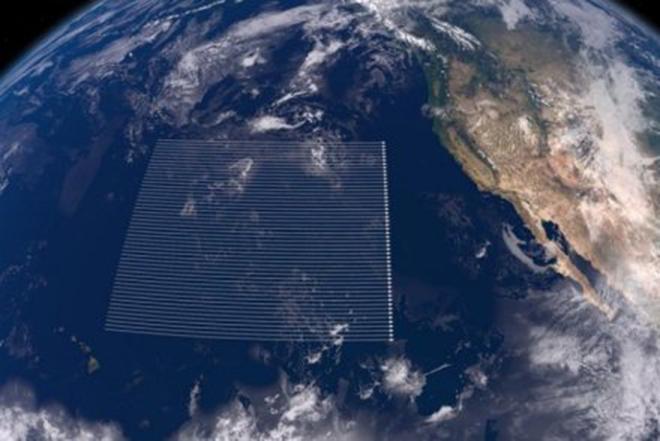Prototype aims to take on the Garbage Patch
by John Curnow on 7 Jul 2016

The Great Pacific Garbage Patch is located between Hawaii and the coast of Los Angeles in the US (R). ABC Licensed
Ocean Cleanup has launched a 100m prototype of an artificial coastline that it hopes will erase the Great Pacific Garbage Patch. Whilst no one is clear as to whether it is 100, 000 tonnes or 100 million tonnes of waste plastic that is out there, one thing is certain, and that is that this will be 'the largest clean-up in history'.
Every bit of plastic that ever was is still with us today and much has now become the dreaded micro-plastics. Not doing anything about this issue could see the micro-plastic problem increase by as much as 50 fold. The prototype in the North Sea is undergoing sea trials as it were, with the anticipated launch of the real deal in 2020. The Dutch foundation, the crowd sourcing and government are to be complimented on their efforts.
Radio Australia's original story is on the link and the essence of it is below.
Great Pacific Garbage Patch of thousands of tonnes of waste plastic
Developed by the Dutch foundation, the 100-metre-long barrier prototype — known as the Ocean Cleanup system — is powered by the ocean's currents and acts as an artificial coastline that can catch and concentrate debris in water.
Key points:
• The Ocean Cleanup system collects plastic by acting as an 'artificial coastline'
• A full scale deployment is expected in the Pacific in 2020
• The Dutch government co-funded the $2.2-million prototype
• Private companies are expressing interest to buy the collected plastic
The team behind Ocean Cleanup aims to achieve 'the largest clean-up in history' when the nearly 100-kilometre full system is deployed in the Pacific in 2020.
But compared to previous efforts and technologies aimed at cleaning up the Pacific patch, Ocean Cleanup founder Boyan Slat said the new system differed in that it allowed 'the natural ocean currents to do the hard work'.
'Instead of going after the plastic, we propose to deploy a very long array of long floating barriers, which are attached to the sea bed, and will allow the natural ocean currents to do the hard work for us,' Mr Slat told the ABC's
Pacific Beat program.
The Ocean Cleanup system collects plastic by allowing the ocean's currents to move through it, rather than deploying vessels to scour the oceans.
'Basically it acts as an artificial coastline where there is no coastline,' Mr Slat said.
But for now, the purpose of the prototype is not to clean plastic from the ocean, but to use the North Sea's rough currents to ensure the system can survive for years out in the Pacific.
'The objective of this test is to see whether we can build something which is able to survive at sea for years,' Mr Slat said.
'Right now what we see from the data is that it's still there, in one piece, and we've actually had some rough seas, so it's promising.
'But the whole reason to test is not to prove ourselves right but to look for the things that don't work.'
Private companies interested to buy plastic
To date the project had mostly been financed through crowdfunding and donations, but for the 1.5-million-euro ($2.23-million) prototype, the Dutch Government came on board to co-fund the project.
Mr Slat said there had been increasing demand from private companies to buy the collected plastic.
'Part of our resources are currently dedicated to researching the recycling possibilities of the material we would retrieve from the ocean,' Mr Slat said.
'And what we see is that the quality of the plastic is really high … and there are also a lot of companies now showing interest in buying up that plastic once we've taken it out of the ocean.
'So what we then did in August last year, is cross the garbage patch with 30 boats at the same time to really take more measurements, and what we found is that there is actually a lot more plastic than people thought was out there.'
Mr Slat said that was because his team did not only measure the extremely dangerous micro-plastics, as is often done, but the larger pieces as well.
'So if we don't clean it up, micro-plastics could potentially increase to up to almost 50-fold.'
If you want to link to this article then please use this URL: www.sailworldcruising.com/146216